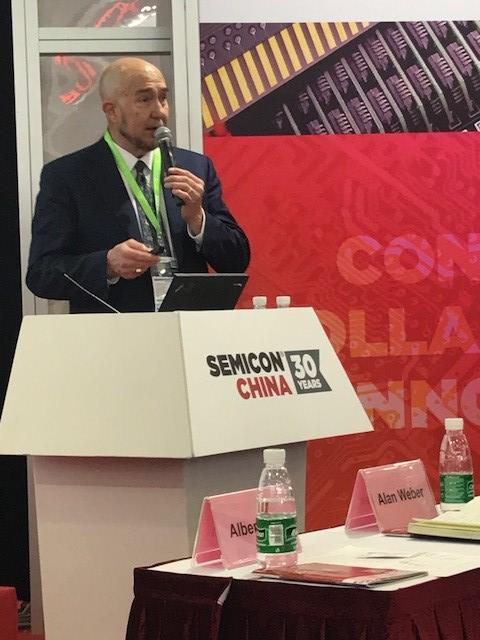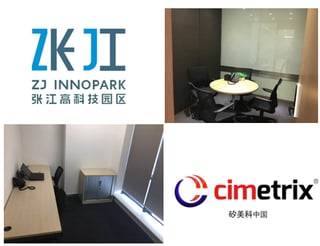
Clare Liu, a Cimetrix Solutions Engineer, goes over the pros and cons of choosing a commercial product for EDA/Interface A vs. building a solution from scratch. Read it now in Chinese, or below in English.
本文的焦点是当许多半导体设备制造商面对他们那些最先进的客户提出的自动化需求时,如何在购买支持EDA(Interface-A)标准的软件产品,或者自主开发之间做出决策。
鉴于我本人在今年初加入Cimtrix之前,曾经在一家半导体装备公司里担任EDA标准实现项目的主要开发人员,我想解释说明一下选择商业解决方案的利与弊。
-
利
1. 经验
在半导体制造设备上实现EDA要求软件开发人员具有半导体行业标准(SEMI)和半导体设备的经验。这对大多数设备供应商来说是非常困难的。即使他们已经拥有良好的软件开发人员,经验丰富的工厂自动化工程师和一个完整的硬件设计团队,他们还是需要有效的共同协作,找出如何设计一个结构良好的设备模型(SEMIE120 CEM 通用设备模型规范)并将设备所有的变量、时间和报警映射到设备模型的各个节点上(SEMI E125 EqSD设备自我描述规范)。 一个商业的EDA解决方案能够同时为OEM提供这些知识,并且可以基于该设备,提供EDA开发过程的指导方针。
2. 验收
 简单地实现EDA接口功能和正确有效地实现的结果是不一样的。我从中得到的教训之一是,我们花了几乎整整一年的时间来实现EDA Freeze I的各种功能,并为测试的需要开发了客户端软件。然而,当我们将我们的EDA解决方案发布给客户工厂时,他们使用权威的第三方测试软件产品对所有设备的EDA解决方案进行了验证。我们的实现最初没有通过验收,因为我们对EDA标准的理解与客户的理解有些差异。为此我们花了很长时间来逐一解决验收中遇到的问题。商业的EDA解决方案通常已经在许多工厂得到了验证,因此更加标准化。
简单地实现EDA接口功能和正确有效地实现的结果是不一样的。我从中得到的教训之一是,我们花了几乎整整一年的时间来实现EDA Freeze I的各种功能,并为测试的需要开发了客户端软件。然而,当我们将我们的EDA解决方案发布给客户工厂时,他们使用权威的第三方测试软件产品对所有设备的EDA解决方案进行了验证。我们的实现最初没有通过验收,因为我们对EDA标准的理解与客户的理解有些差异。为此我们花了很长时间来逐一解决验收中遇到的问题。商业的EDA解决方案通常已经在许多工厂得到了验证,因此更加标准化。
 3. 时机
3. 时机
一个商业的EDA解决方案可以帮助OEM在短时间内开发出合格的EDA接口。自主开发EDA会给本已紧张的交付进度增加时间压力,如果需求来自一个新客户,第一个支持EDA标准的设备供应商通常会更有优势。在业务方面,EDA功能很有可能是获得订单的关键。在技术方面,第一个EDA的使用会成为整个Fab的范例,可以被用来制定其他设备在生产环境中必须满足的操作要求。
4.服务
使用商业EDA解决方案通常包括来自软件供应商的良好的技术支持,这些技术支持可能包含在最初的许可证费用中,或者是单独的技术支持合同。这意味着OEM公司不需要维持一个专门的软件团队来维护和解决遇到的软件问题。相反,他们可以依靠更专业的支持团队,而不用担心任何内部开发人员离开公司所带来的影响。
5. 知识更新
由于很多改进得到认同,还有很多新的技术在关键产品中的使用变得可行,半导体行业的EDA标准每年都在发生变化,在写这篇文章的时候,一个新的EDA标准冻结版本Freeze III正在投票中。商业EDA解决方案通常会紧紧追随标准的发展,同时会不断根据其他工厂用户的请求增加新的功能。这使得OEM能够快速、可靠地响应客户的最新需求。
-
弊
1.成本
OEM必须为商业软件的许可证,以及可能的、每年的技术支持支付费用。
2.知识产权(IP)
一些OEM公司为了对EDA功能的源代码有完全的控制权和所有权,他们选择自主开发并拥有这些软件,其原因是大多数商业软件包通常不会为基本许可证的使用者提供源代码。
3.修复错误的时间
如果在商业软件包中发现错误,设备工程师甚至工厂客户可能需要帮助软件供应商找到根本原因。他们还必须等待供应商修复并发布新版本的软件。这对于使用者来说非常不方便。
如果您的公司正面临这样的决定,请联系我们——我们很乐意分享我们的专业知识和市场知识,并协助您做出明智的决定。
您可能还对以下信息感兴趣:
 The focus of this blog posting is the decision that many semiconductor manufacturing equipment suppliers face when deciding how to address the automation requirements of their most advanced customers, namely, whether or not to buy a commercial software package that supports the SEMI Equipment Data Acquisition (EDA / Interface A) Standards, or to develop this capability in-house.
The focus of this blog posting is the decision that many semiconductor manufacturing equipment suppliers face when deciding how to address the automation requirements of their most advanced customers, namely, whether or not to buy a commercial software package that supports the SEMI Equipment Data Acquisition (EDA / Interface A) Standards, or to develop this capability in-house.
I am especially qualified to explain the pros and cons of choosing a commercial solution, having worked as the EDA standards implementation lead developer in an equipment supplier before joining the Cimetrix team earlier this year.
- Pros
1. Experience
Implementing EDA on a single unit of semiconductor manufacturing equipment requires that the software developers have experience with both SEMI Standards and the equipment. This is very difficult for most equipment suppliers. Even if they have good software developers, experienced factory automation engineers and a complete hardware design team, they must still work together efficiently to figure out how to design a well-structured equipment model (SEMI E120 CEM) and map all the equipment variables, events and alarm to the CEM nodes (SEMI E125 Equipment Self-Description). A commercial EDA package provides all this knowledge for the OEM and guidelines explaining the EDA development process for their systems.
2. Qualifications
 Simply being able to implement the EDA interface functions is not the same as implementing them in a robust fashion. One of my lessons learned is that we spent almost an entire year to implement the EDA Freeze I version of the standards and the client software required to test these functions. However, when we released the EDA interface to the factory customer, they qualified the EDA solution for all equipment modules with an authoritative third-party compliance testing software product. Our implementation failed at first because our understanding of the SEMI Standards specifications was different from the customer’s understanding. So we struggled for a long time to fix all the problems. A commercial EDA package will necessarily have been proven in many sites and is therefore far more standardized.
Simply being able to implement the EDA interface functions is not the same as implementing them in a robust fashion. One of my lessons learned is that we spent almost an entire year to implement the EDA Freeze I version of the standards and the client software required to test these functions. However, when we released the EDA interface to the factory customer, they qualified the EDA solution for all equipment modules with an authoritative third-party compliance testing software product. Our implementation failed at first because our understanding of the SEMI Standards specifications was different from the customer’s understanding. So we struggled for a long time to fix all the problems. A commercial EDA package will necessarily have been proven in many sites and is therefore far more standardized.
3. Timing

A commercial EDA product can help the OEM develop a qualified EDA interface in a short time. Developing EDA in house adds time pressure to already tight delivery schedules, and if the requirements are coming from a new customer, the first equipment supplier supporting EDA standards may have an advantage. On the business side, EDA might be the key feature to get the order. On the technical side, the first usage may determine the approach used across the entire fab, thereby dictating operational requirements that the other equipment must meet in the production environment.
4. Service
Using a commercial EDA package normally includes good technical support from the software supplier; this may be covered in the initial license fee or as a separate support contract. This means the OEM company does not have to dedicate a large software team for maintenance and troubleshooting of software issues. Instead, they can rely on a professional support team, and not worry about what happens if any of the in-house developers leave the company.
5. Knowledge update
The SEMI EDA standards are changing every year as improvements are identified and new technologies become viable for mission-critical production usage. At this writing, a new Freeze III version is being balloted. A commercial EDA package will closely follow the standards as they evolve and provide new features according to the requests from other factory users. This enables OEMs to respond quickly and reliably to the latest feature requests from their customers.
-
Cons
1. Cost
OEM must pay for the commercial package licenses and possibly for the annual support.
2. Intellectual Property (IP)
Some OEM companies want to have full control of the EDA interface source code, so they choose to develop and own the software by themselves. Most commercial packages don’t provide source code with a basic license.
3. Bug fixing lead time
If bugs are found in the commercial package, the equipment engineers and perhaps even the factory customers may need to help the software supplier find the root cause. And they must also wait for the supplier to fix and release a new version of the software. This can be quite inconvenient.
If this is a decision your company is facing, get in touch with us – we’re happy to share our expertise and market knowledge and help you make a well-informed decision.
You also might be interested in the following information:










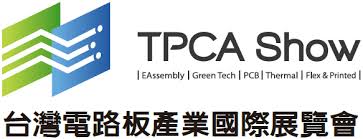
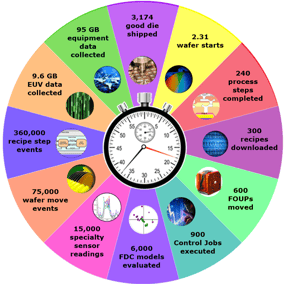
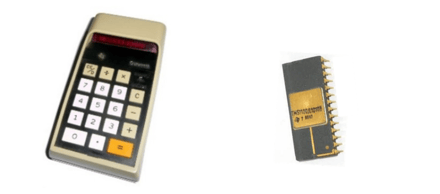
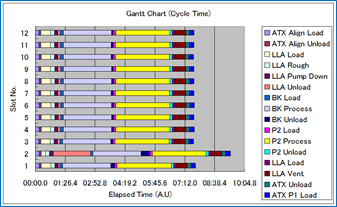
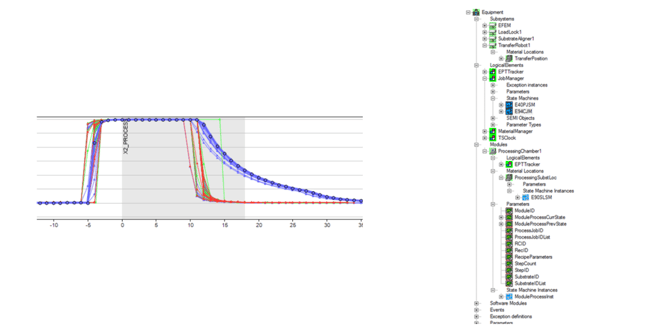
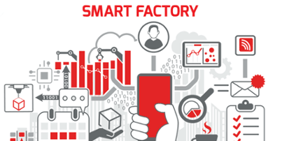 You may not be responsible for running a gigafab anytime soon, but the SEMI standards used in this setting are no less applicable to any Smart Manufacturing environment. Give us a call if you’d like to know more about how these technologies can benefit your operations for many years to come.
You may not be responsible for running a gigafab anytime soon, but the SEMI standards used in this setting are no less applicable to any Smart Manufacturing environment. Give us a call if you’d like to know more about how these technologies can benefit your operations for many years to come. 
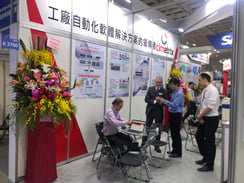 SEMICON Taiwan was held September 5-7, 2018 at the Taipei Nangang Exhibition Center. During that same time (Friday September 7), the e-Manufacturing & Design Collaboration Symposium (eMDC) alsotook place in Hsinchu, Taiwan. Cimetrix exhibited in the Smart Manufacturing Pavilion and had a strong presence at both shows, exhibiting and speaking at SEMICON, and speaking and sponsoring a tea break at eMDC.
SEMICON Taiwan was held September 5-7, 2018 at the Taipei Nangang Exhibition Center. During that same time (Friday September 7), the e-Manufacturing & Design Collaboration Symposium (eMDC) alsotook place in Hsinchu, Taiwan. Cimetrix exhibited in the Smart Manufacturing Pavilion and had a strong presence at both shows, exhibiting and speaking at SEMICON, and speaking and sponsoring a tea break at eMDC. 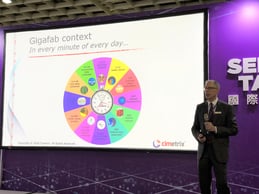 In addition to the exhibitions, SEMICON Taiwan also sponsored many forums for expert speakers throughout the show. Dave Faulkner spoke on Friday morning on the topic of "Making Smart Manufacturing Work with EDA: The Stakeholder-driven requirements Development Process". On that same day, Alan Weber traveled to Hsinchu for eMDC and spoke on a similar topic, "Smart Manufacturing Stakeholders and Their Requirements." Smart Manufacturing is a prevailing topic across the industry and was featured at SEMICON Taiwan, as they continue the Smart Manufacturing Journey that began with SEMICON West.
In addition to the exhibitions, SEMICON Taiwan also sponsored many forums for expert speakers throughout the show. Dave Faulkner spoke on Friday morning on the topic of "Making Smart Manufacturing Work with EDA: The Stakeholder-driven requirements Development Process". On that same day, Alan Weber traveled to Hsinchu for eMDC and spoke on a similar topic, "Smart Manufacturing Stakeholders and Their Requirements." Smart Manufacturing is a prevailing topic across the industry and was featured at SEMICON Taiwan, as they continue the Smart Manufacturing Journey that began with SEMICON West. 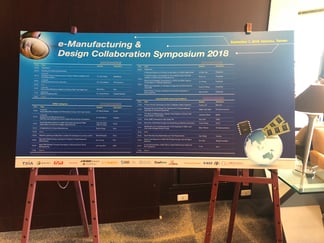 If you would like to learn more about Smart Manufacturing, our work in Taiwan or Cimetrix, please feel free to ask an expert any time.
If you would like to learn more about Smart Manufacturing, our work in Taiwan or Cimetrix, please feel free to ask an expert any time. 






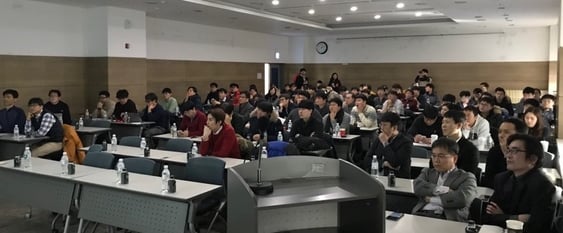
 How an EDA specification is put together by a chip maker
How an EDA specification is put together by a chip maker
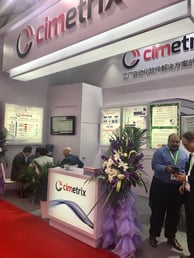 SEMICON China was held from March 14-16, 2018 in Shanghai at the Shanghai New International Expo Centre. Simultaneously co-located at this huge complex were Productronica China and Laser World of Photonics China. All three shows were very busy this year, and it is clear the electronics manufacturing industry in China is booming.
SEMICON China was held from March 14-16, 2018 in Shanghai at the Shanghai New International Expo Centre. Simultaneously co-located at this huge complex were Productronica China and Laser World of Photonics China. All three shows were very busy this year, and it is clear the electronics manufacturing industry in China is booming.